
Using her hands to produce work has been a "welcome relief" to the emotional chaos Auckland artist Viky Garden has been experiencing.
Dealing with the failing health of her parents has profoundly changed Garden’s emotional footing. But it was a request to give a talk about her career, that really shook things up for Garden. Having spent days going through images and notes, some from decades ago, she found the talk went surprisingly well.
"The following day, however, found me literally beached - the creative result of this was that I had virtually talked myself out of painting.
"I found I had explained myself away. Painting as a language no longer resonated and I simply couldn’t make more language up if I tried."
For an artist known predominantly for her painting, primarily self-portraiture, taking a step into the less familiar world of sculpture has been a "huge risk".
"However, compared to standing in front of a blank canvas, I found working hands-on with the sculptures to be psychologically and physically therapeutic."
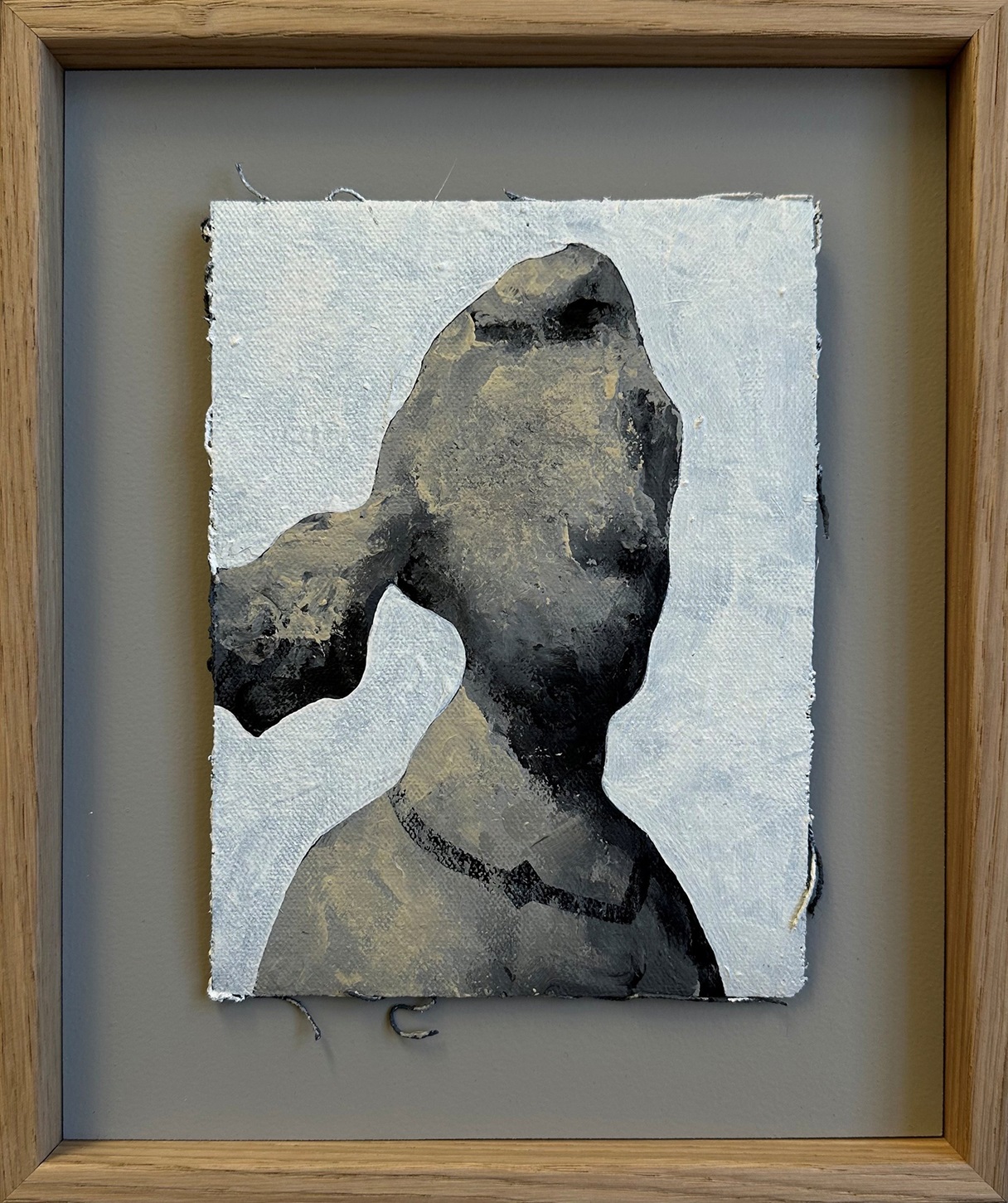
Some of those materials were found on walks to calm her mind, such as the dried wild iris pods she collected.
"I realised how sculpturally beautiful the dried seed heads were, so I brought a bunch of them home to my studio."
Garden’s curiosity thrives on finding "lo-fi approaches" to perceived high art.
"After all, painting materials are merely cloth nailed or stapled on to bits of wood - nothing more.
"It’s really no different when thinking about what materials can express or represent a sculptural idea."
Over the years she has been drawn to pushing boundaries and exploring unconventional materials and methods from pinhole photography - she has won international awards in Barcelona, Spain in 2018 and 2020 - to intaglio prints using tetra paks as an engraving plate.
"I enjoy bringing a modern, recycled twist to traditional processes."
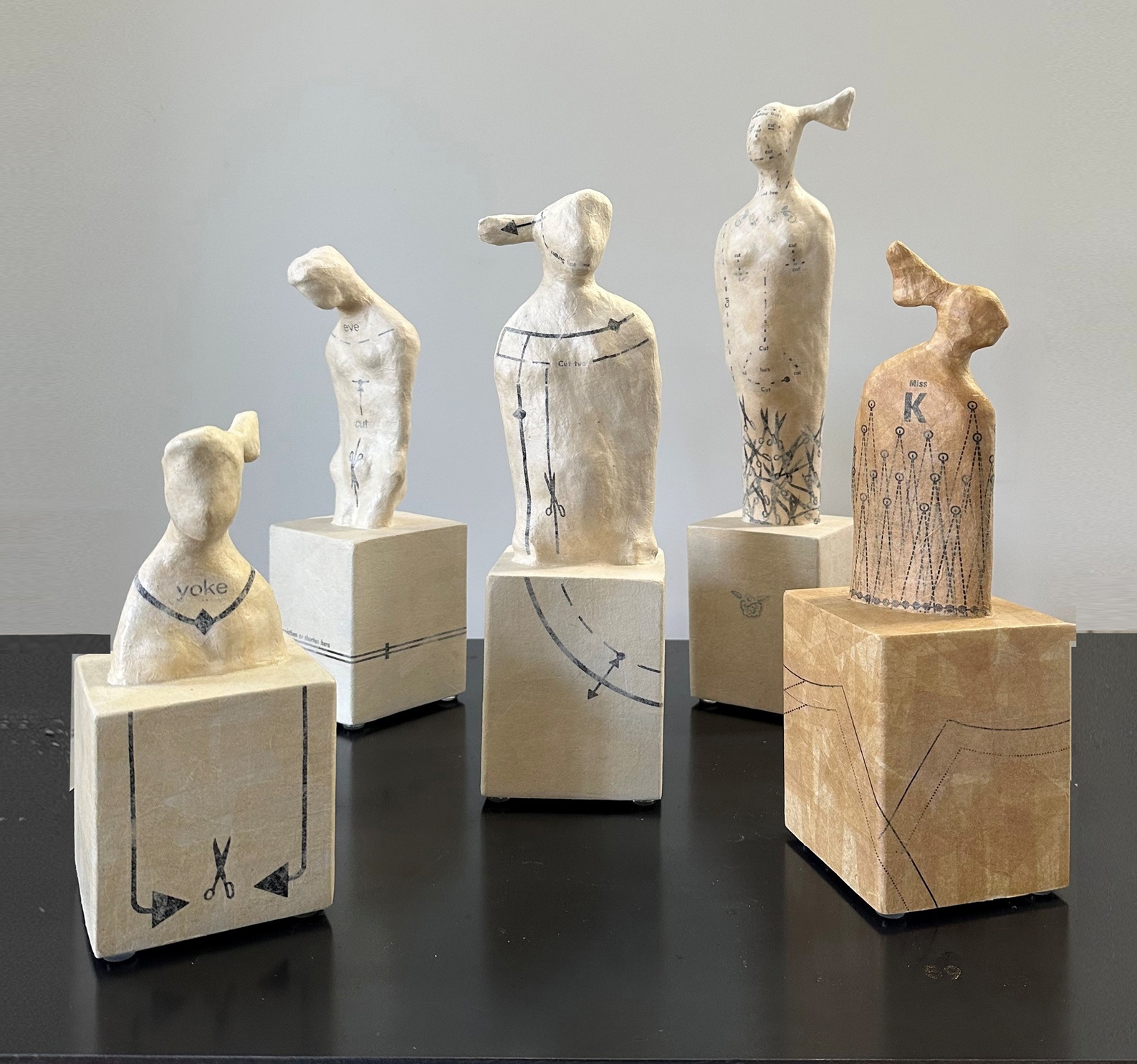
"Art has always been a solo journey for me but with no boundaries in experimentation and opportunity and failure.
"Sculpture was no different to painting when it came down to it."
Out of this journey came three components, created over a year, which flow on from one another - The Agony of Flowers, Crucibles and Mugshots - and are to be exhibited at Fe29 in Dunedin this month.
Agony of Flowers started out as a hard plaster sculpture but the flower head was too heavy for the barbed wire stem so she attempted the concept in papier-mache.
"Again it was a case of trial and error but with the right glue and a solid foundation within the flower itself, it proved the right choice. The barbed wire came from my girlfriend’s uncle’s farm which they were clearing at the time.
"I often think part of my creative practice comes down to what’s presenting itself to me at any specific given time.
"It’s a case of keeping my eyes and my mind wide open."

"It was a very short step to then work out how to achieve the same poignancy or vulnerability in the form of statues - which became Crucibles - without repeating what already exists in sculpture when it comes to the statue’s faces."
Crucibles extends her ongoing conversation about the female experience and she knew a very tough granite plaster would be needed to create the solid forms.
"I was learning as I went along."
The figurative forms of the Crucibles are directly influenced by a series of paintings from 1996, The Sisters of Mercy.
"So they are an extension or continuation of a long conversation about my experience in the world."
She then encased the forms in vintage sewing patterns.
"By using the sewing pattern tissue as ‘skin’, the pattern’s text became a sort of codified language of ‘pattern speak’, a subtle form of communicating socio-political messages without stating the obvious."
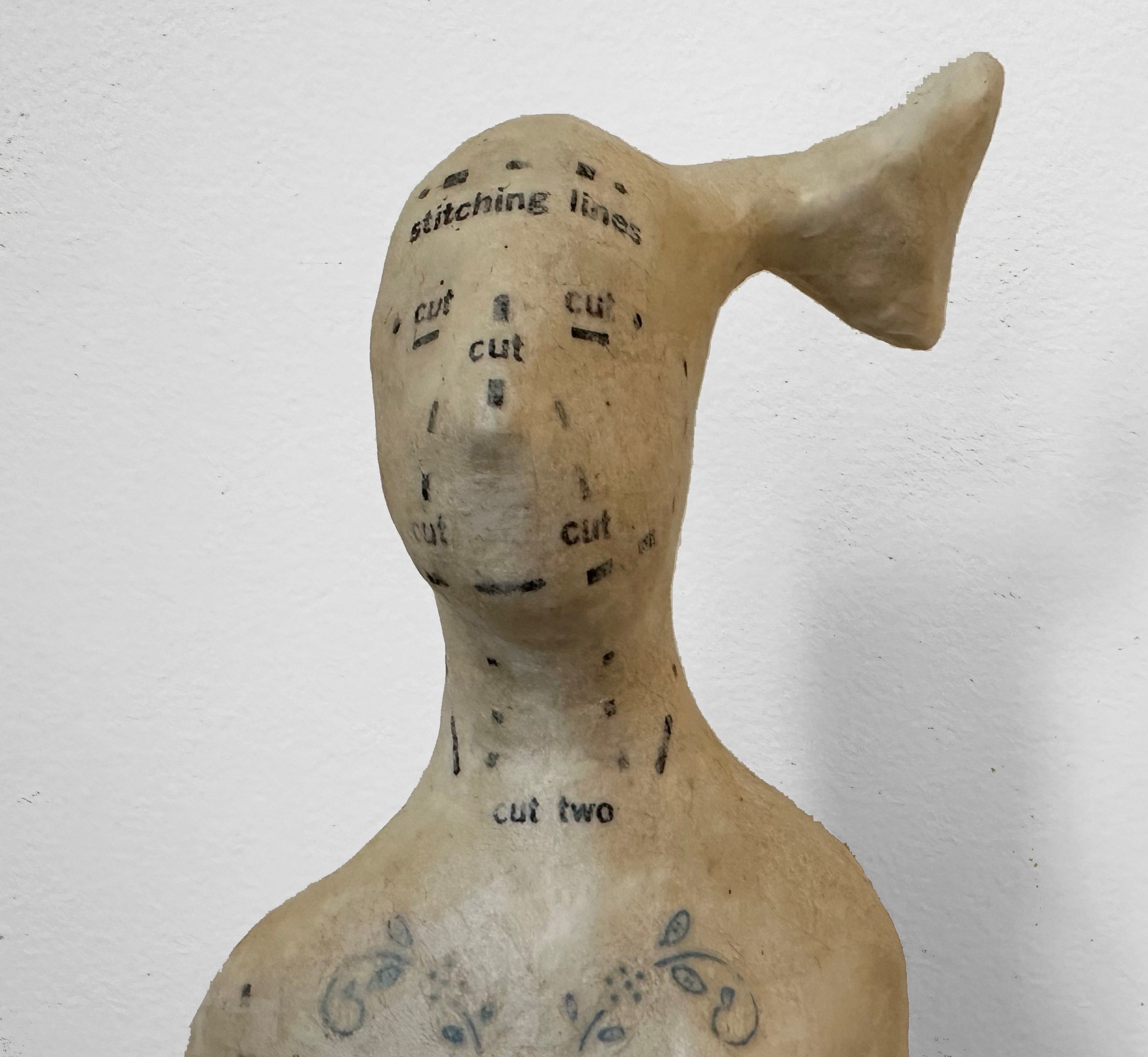
"It’s fair to say an invisible thread links all three components."
Garden, who was born in Wellington but lives in Auckland, describes the time as emotionally exhausting because much had changed and each new day seemed to have issues she had little or no experience dealing with.
"I see it in the work, the vulnerability as much as the tenacity of the pieces. I have always had a close relationship with my work. When I have an idea, I try really hard to distil or strip it back to basics, which then gives me something to play with and make my own."
When considering aspects of dementia, which her mother has, Garden did not want to express it with paint. Instead she created a series of 40 individually hand-etched prints The Dementia Pear (2023) - etched and printed using tetra-packs as the plate.
"The lines and shadows in the prints are delicate and fragile and vulnerable, each one unique. A lot of that same pathos is in The Agony of Flowers sculptures."
Years ago she created lino prints because lino is what generations of women stood on in kitchens and laundries.
"So, when it came to covering the plaster Crucibles, it had to be with something that gave voice to the pieces in a very subliminal way, and the vintage sewing machine patterns ticked various boxes for me."
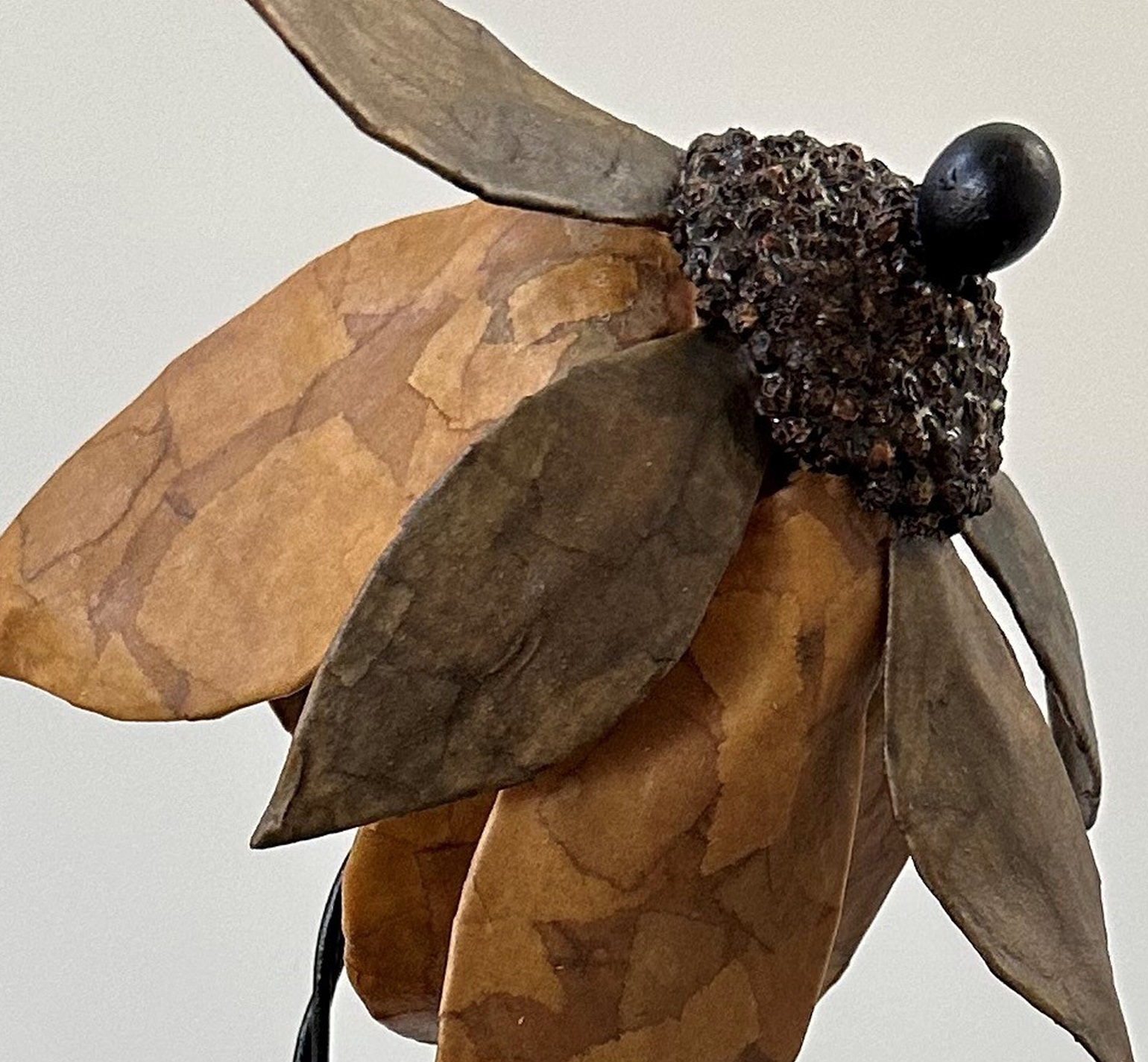
"I’m post-menopausal now. Metaphorically, it’s a new canvas and a new set of brushes. That’s how I feel about it and I have no doubt that my new work will reflect this, in one way or another."
Despite the works holding a mirror to her own stories, she does not feel self-conscious or vulnerable when they are exhibited.
"When it comes to paintings in particular, it’s not about ‘me’ it’s about ‘her’."
Garden, whose Greek father and Polish mother came to New Zealand as refugees escaping war-torn countries, has been painting self portraits since she was 15. Self-portraiture just always appealed to her.
"She looks at me today with such an honest intensity - a maturity beyond her age, she’s still relevant, current. I am still her."
The need to draw has always been with Garden but art was not considered to have a future so she was encouraged to become an office worker.
"I have a couple of early memories: one collecting the melted tar off the sides of the road in summer and fashioning small statues, the other is helping Dad sieve enamel paints from one tin to another."
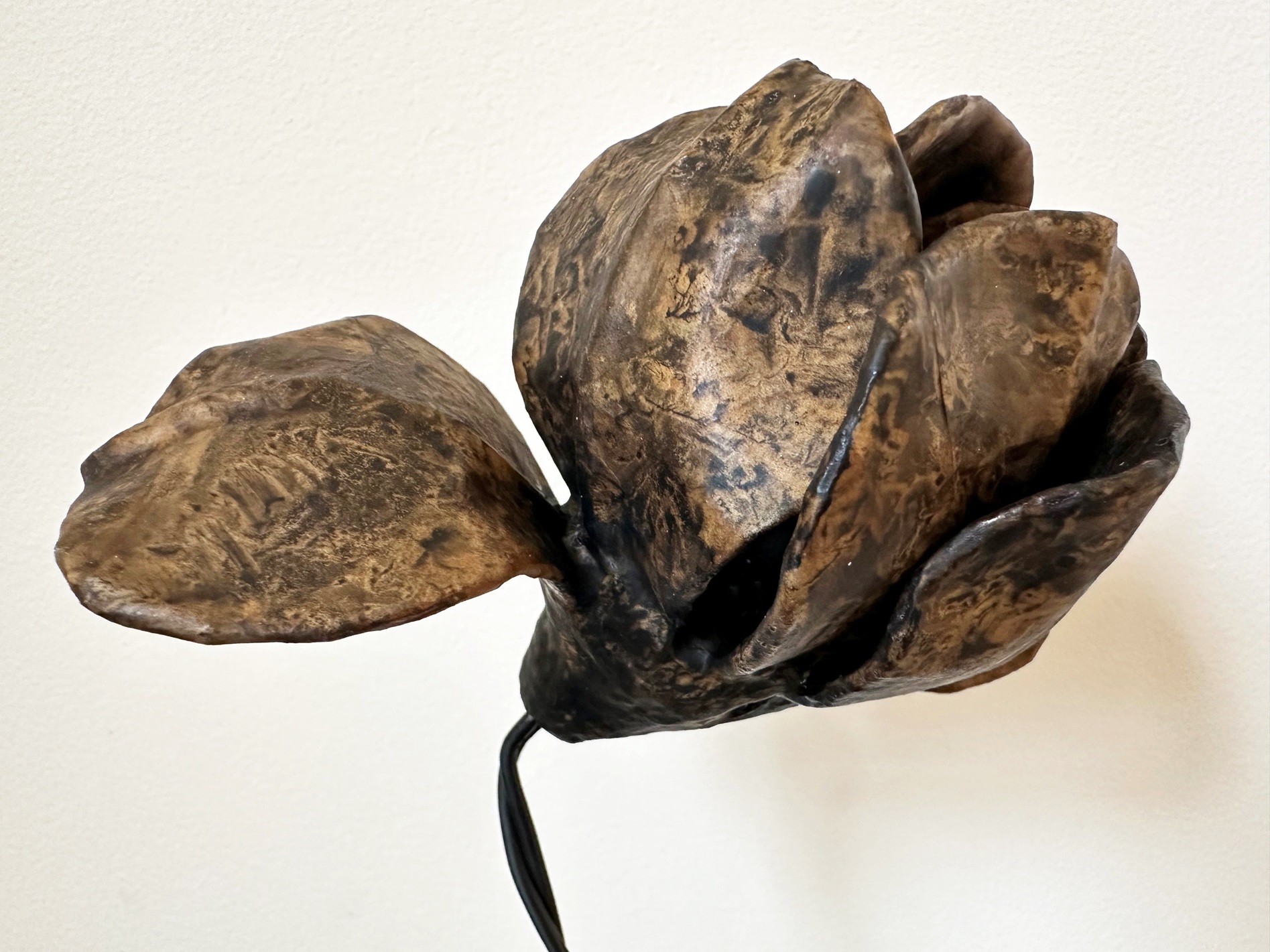
"No-one had said that to me before. I was a late starter. I had my first solo show in 1989 - my exhibition with Fe29 will be my 28th solo show."
While she began painting in oils - she wanted to learn to paint "properly" - but found after a few decades she was not enjoying it so she loosened up her medium using pencils and leaving negative space on the canvas.
"Dissatisfied and rather depressed, one summer I stopped altogether and didn’t paint for three months. I thought if I’m going to try something new, then my approach has to be different too. I abandoned my brushes in exchange for bits of cardboard and sticks and used liquid acrylic as I didn’t want anything coming out of a tube similar to oils. I’ve been working with acrylics since the beginning of 2016 and still enjoy the process."
These days her works are created in a modified garden shed in her backyard. She moved there from a room off her lounge as her work expanded and tries to get into her studio daily - "the longer I delay getting into my studio the worse I am to be around".
"The studio ceiling has a nice pitch so I can put larger works on my easel. I won’t work in chaos. That’s not to say I don’t know how to make a mess, but I need clarity and visual calm."
TO SEE
Viky Garden: "A Year" - sculpture & painting, Fe29 Gallery, July 25-September 1.










